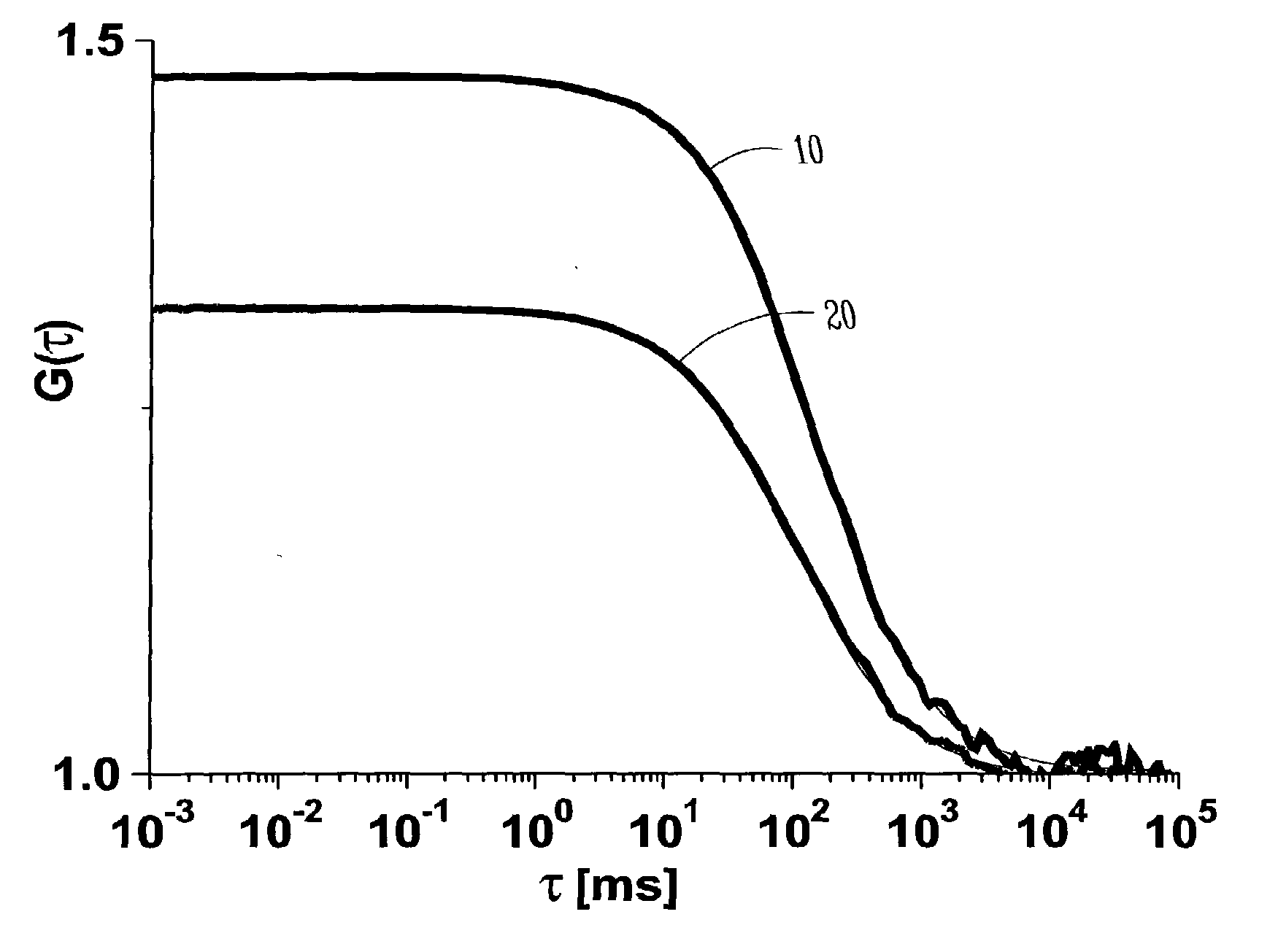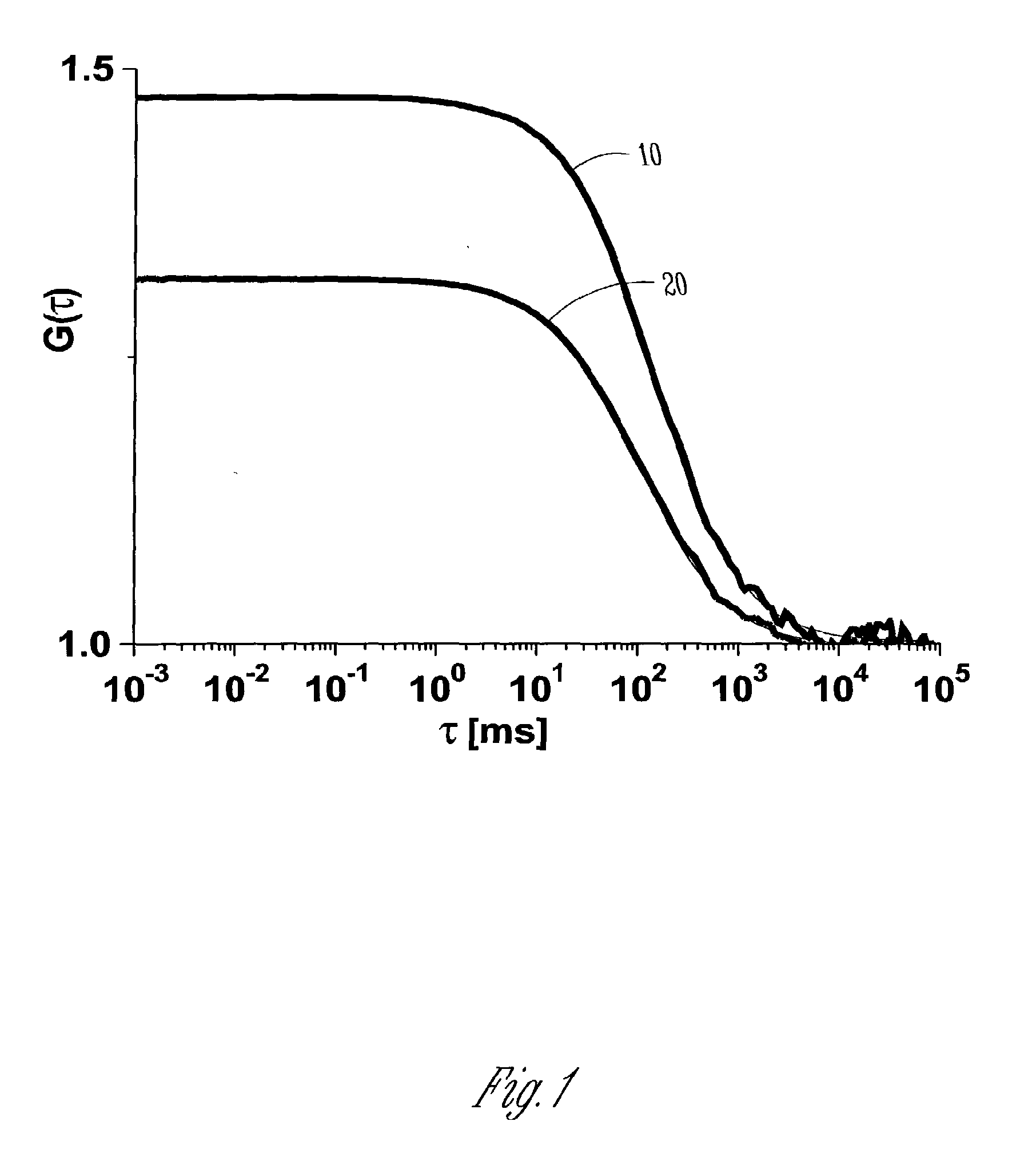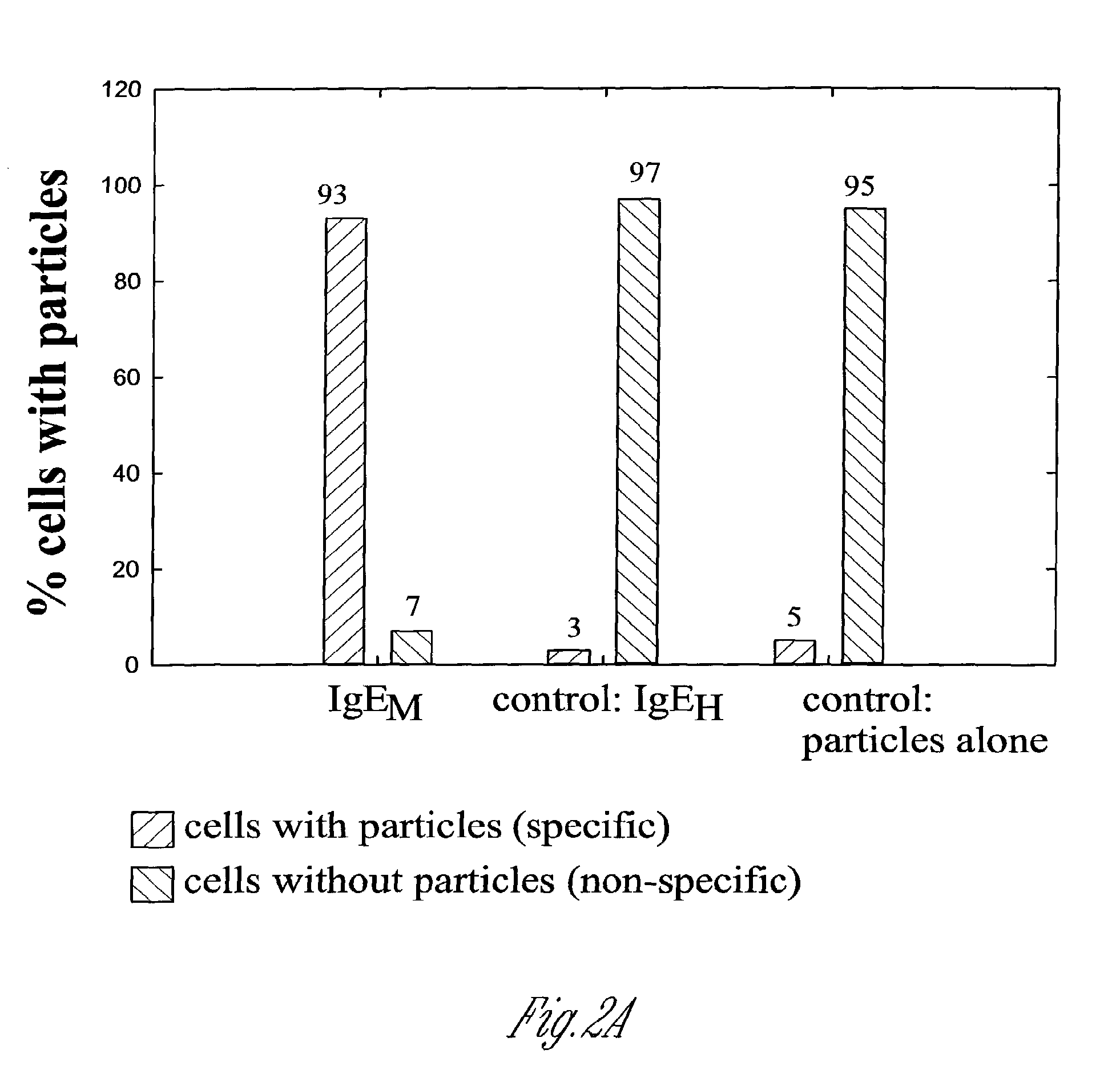Fluorescent Silica-Based Nanoparticles
a technology of fluorescence silica and nanoparticles, applied in the field of nanoparticles, can solve the problems of substrate-induced changes in either or both the absorption and emission spectrum, difficulty in obtaining highly accurate quantification of cell population's magnetic susceptibility, and general difficulty in accurately determining the chemical and physical structure of cell surface markers and immunological labels attached to the cell surfa
- Summary
- Abstract
- Description
- Claims
- Application Information
AI Technical Summary
Benefits of technology
Problems solved by technology
Method used
Image
Examples
example 1
[0138]Preparation of Red Core Nanoparticles. 10 mg of tetramethylrhodamine-5-(and-6-)isothiocyanate (TRITC) were dissolved in ethanol. The molar ratio of 3-aminopropyltricthoxysilane (APTS) to TRITC was 50 to 1, with 2 mL of ethanol, per mg of APTS. Following complete dissolution of TRITC in ethanol, APTS was added to the reaction vessel. The reaction was stirred in the dark in the glove box for about 12 hours at room temperature.
example 2
Preparation of Green Core Nanoparticles
[0139]5 mg of Alexa Fluor® 488 C5 Meleimide was dissolved in ethanol. The molar ratio of 3-mercaptopropyltriethoxysilane (MPTS) was 100 to 1, with 2 mL of ethanol per mg of MPTS. Following complete dissolution of TRITC in ethanol, MPTS was added to the reaction vessel and stirred for about 12 hours in darkness at room temperature.
[0140]5 mg of Alexa Fluor® 488 carboxylic acid, succinimidyl ester was dissolved in THF. The molar ratio of 3-Aminopropyltriethoxysilane (APTS) to Alexa Flour® 488 carboxylic acid, succinimidyl ester was 100 to 1, with 2 ml of THF per mg of APTS. Following complete dissolution of Alexa Fluor® 488 carboxylic acid, succinimidyl ester in THF, APTS was added to the reaction vessel and stirred for 12 hours in darkness at room temperature. Due to the minute quantities, the fluorescent dye-core adducts were not isolated from the reaction medium before the silica shell was deposited.
example 3
[0141]Preparation of Sized Silica Coated Fluorescent Nanoparticles Preparation of silica coated fluorescent nanoparticles of different sizes was accomplished using different relative molar amounts of reagents as described above. The molar amounts of reagents for the synthesis of 20 nm to 200 nm particles are tabulated in Table I. All silica coating of fluorescent nanoparticle procedures were accomplished at ambient conditions, i.e. at room temperature with ethanol as the solvent. A representative procedure follows.
[0142]To a mixture containing fluorescent core particles there was added continuously 2 mL of TEOS in 100 mL additional solvent, dropwise such as over about 20 minutes. The remaining larger quantity of the TEOS was added at a more rapid rate, such as over about a 45 minute period with simultaneous addition of 400 mL of additional solvent. Optionally, water was added at this stage to grow particles larger than about 100 nm and to maintain the molar ratio of water to TEOS as...
PUM
| Property | Measurement | Unit |
|---|---|---|
| Fraction | aaaaa | aaaaa |
| Fraction | aaaaa | aaaaa |
| Thickness | aaaaa | aaaaa |
Abstract
Description
Claims
Application Information
 Login to View More
Login to View More - R&D
- Intellectual Property
- Life Sciences
- Materials
- Tech Scout
- Unparalleled Data Quality
- Higher Quality Content
- 60% Fewer Hallucinations
Browse by: Latest US Patents, China's latest patents, Technical Efficacy Thesaurus, Application Domain, Technology Topic, Popular Technical Reports.
© 2025 PatSnap. All rights reserved.Legal|Privacy policy|Modern Slavery Act Transparency Statement|Sitemap|About US| Contact US: help@patsnap.com



